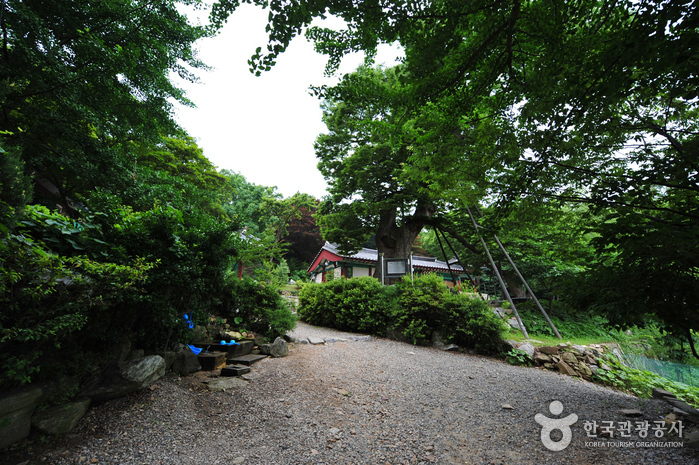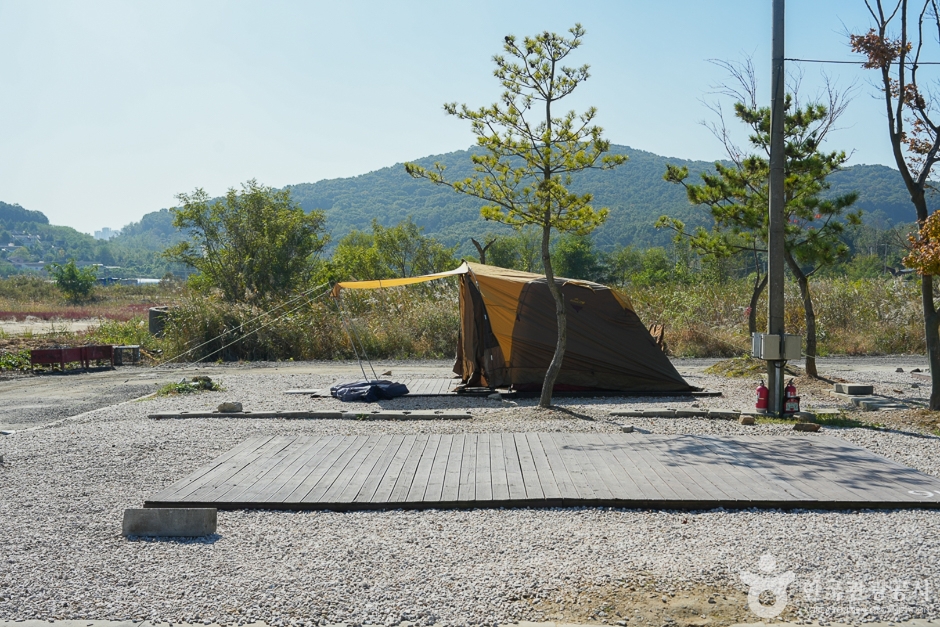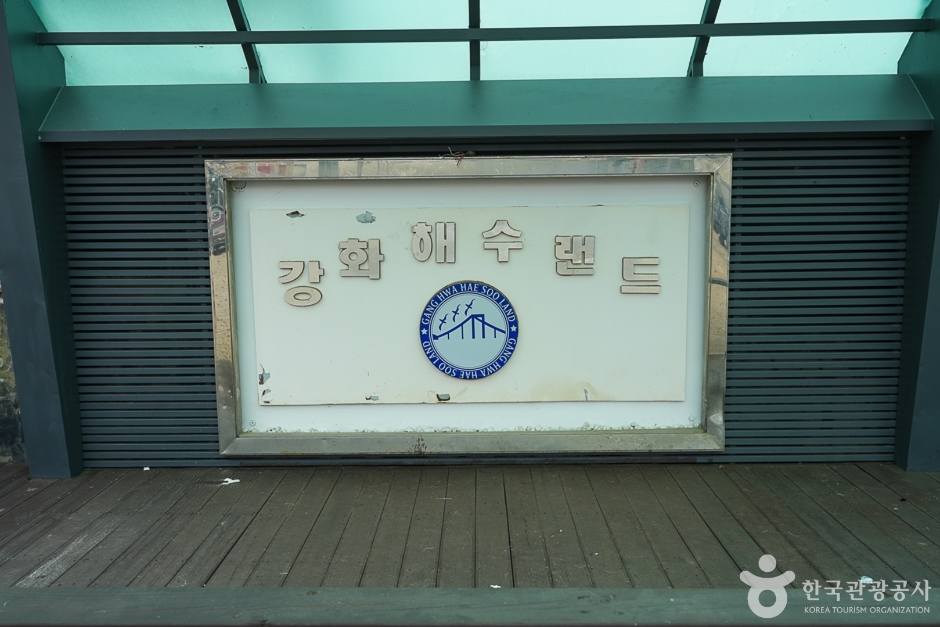Ganghwa Luge (Ganghwa Seaside Resort) (강화루지(강화씨사이드리조트))
13.9Km 0 2023-11-10
217 Jangheung-ro, Ganghwa-gun, Incheon
+82-32-930-9000
Ganghwa Seaside Resort delivers joy, happiness, and love with a gondola, food court, themed trails and the only luge track in the western part of the metropolitan area. It is a place where visitors can meet the mountains and the sea and feel the profoundness of nature without having to travel far way from the city. Visitors can take the gondola to reach the top, guided by the rich scent of the forest, and fully enjoy the atmosphere of Ganghwado Beach as well as the beautiful sunset from the observatory. The resort has a luge designed to descend dynamically through a 1.8-kilometer track, offering an excitement perfect for all members of the family.
Incheon Yonggungsa Temple (용궁사 (인천))
14.0Km 29137 2021-11-12
199-1, Unnam-ro, Jung-gu, Incheon
+82-32-746-1361
Yonggungsa Temple is located in the same region as the Incheon International Airport and sits on the northeastern slopes of Baegunsan Mountain. During the Silla Kingdom (about 1,300 years ago), the temple was named ‘Baegunsa’ by King Munmu, in reference to the temple’s mountain home. During the Joseon dynasty, it was the temporary residence of Heungseon Daewongun (1820-1898, a politician and father of King Gojong), who stayed at the temple for 10 years praying for his son to ascend to the throne. When his son was finally crowned king, Heungseon Daewongun rebuilt the temple and changed the name to Yonggungsa.
The temple consists of various buildings such as Gwaneumjeon (re-constructed by Heungseon Daewongun), Yosachae (home of the monks), Chilseonggak, and Yonghwanggak. In Yosachae, the writings of Heungseon Daewongun are hung on the wall and recently, an 11 meter-high statue of Maitreya was put in place. In front of the temple are two 1,300 year-old zelkova trees.
Ganghwa Jeondeungsa Temple (강화 전등사)
14.0Km 54049 2024-07-30
37-41 Jeondeungsa-ro, Ganghwa-gun, Incheon
+82-32-937-0125
Jeondeungsa Temple is located in Samnangseong Fortress, which is said to have been built by the three sons of Dangun, the founder of Korea. The temple was originally called Jinjongsa Temple during the early Goryeo dynasty; the name changed to the current Jeondeungsa Temple in 1282.
Jeondeungsa Temple contains significant architectural works, including the main building Daeungbojeon Hall, built in 1621. Decorated with delicate carvings, it is a superlative example of the architecture of the mid-Joseon dynasty. Visitors can see names of soldiers written on the walls and columns of Daeungbojeon Hall. These soldiers fought against the French Navy and wrote their names in Jeondeungsa to pray to Buddha for good luck in war.
There are ten other structures of historical significance at the temple including Yaksajeon Hall, Beomjong Bell, and Yangheonsu Victory Monument. The compound is also home to many ancient trees.
Seongmodo Shrubby Sea-blite Habitat (석모도 칠면초 군락지)
14.2Km 0 2024-02-20
29-3 Maeeum-ri, Samsan-myeon, Ganghwa-gun, Incheon
Seongmodo Shrubby Sea-blite Habitat is a habitat where a colony of shrubby sea-blite flourishes on tidal flats. Situated on the route to Minmeoru Beach, accessible via the Seongmodaegyo Bridge, this area is known for the robust growth of seepweed, which forms colonies in tidal flats or areas with high salinity. From September to mid-October, the landscape transforms with vibrant reddish-pink flowers, often referred to as the "fall foliage of the sea."
Yeongjongdo Island (영종도)
14.4Km 24934 2022-05-12
100, Unnamseo-ro, Jung-gu, Incheon
+82-32-745-0211
Yeongjongdo Island, combined with Yongyudo and Sammokdo Islands through land reclamation work, connects to the mainland via Yeongjongdaegyo Bridge and is located 3 kilometers northwest of Yeonan Pier, Incheon. The 4.42 kilometer-long ride to Yeongjongdo Island provides amazing views of the ocean and mud flats. A fish market is the first thing that greets visitors to the island, providing fresh seafood daily. The island has the Yonggungsa Temple and Baegunsan Mountain, known for its walking trails. At the peak of the mountain, visitors can see a panoramic view of Incheon International Airport.
Wondumak Garden (원두막가든)
14.8Km 18389 2024-02-27
60 Jeondeungsa-ro, Gilsang-myeon, Ganghwa-gun, Incheon
Wondumak Garden is a local cuisine restaurant in Ganghwa that has been delighting visitors since its establishment in 1990. Among its signature dishes are jeotguk galbi (salted shrimp and galbi soup) and sotbap (pot rice). Jeotguk galbi resembles a hot pot, incorporating pork galbi, pork bones, vegetables, and a salted shrimp-based broth. It is renowned for its non-spicy and clean-tasting broth, offering a distinctive and flavorful dining experience.
Manjung Campground (만정캠핑장)
15.4Km 29776 2024-02-16
279-20 Yeongjongsunhwan-ro, Jung-gu, Incheon
Manjung Campground, situated on Yeongjongdo Island, offers spacious campsites allowing for undisturbed rest. Adjacent to the campground are fishing areas for both freshwater and sea fishing, making it a favored spot among fishing enthusiasts. Additionally, its proximity to Yeongjongdaegyo Bridge enhances accessibility, and visitors can enjoy spectacular sunset views as well.
Ganghwa Seodo Central Church (강화 서도 중앙교회)
16.9Km 26303 2020-06-16
256-1, Jumundo-gil, Ganghwa-gun, Incheon
+82-32-760-6474
By the late Joseon dynasty, Ganghwado Island had already been attacked many times by foreign invaders. During the Byeonginyangyo (the French invasion in 1866), the French fleet stayed in Ganghwado for about a month until they withdrew their forces after losing during the Jeongjoksanseong Battle. During the Sinmiyangyo (the United States expedition to Korea in 1981), the American fleet attacked Chojijin Fortress, Deokjinjin Fortress and Gwangseongbo Fortress. Hence,
Ganghwado played a big part in South Korea opening its doors to the West in the 19th century. Ganghwado also became the Western Christian missionaries' center of activity for their missionary works.
There are three remaining churches that were built in that time that were influenced or built by the Western Christian Missionaries: Ganghwa Anglican Church established in 1900, Ganghwa St. Andrew's Church established in 1906, and Ganghwa Seodo Central Church established in 1923.
Ganghwa Seodo Central Church started contruction in February 1923 and was completed as a Korean-architecture chapel in July 1923. The original name was Jumun Church and it was renamed as Seodo Central (Jungang) Church in 1978. The church belongs to The Korean Methodist Church.
Even though the building of the church doesn't reflect outstanding building techniques and aesthetic qualities, a Western church with a Korean-style wooden structure such as Ganghwa Seodo Central Church is still worth a visit.
Muuido Island (무의도)
16.9Km 93174 2024-03-07
310-11 Daemuui-ro, Jung-gu, Incheon
+82-32-760-8855
Muuido Island is an island located in Jung-gu, Incheon. In the past, it was accessible only by boat, but with the opening of Muuidaegyo Bridge, vehicular access became possible. Surrounding Muuido Island are other islands such as Silmido Island and Somuuido Island, which are connected by bridges, making them easily reachable. There is a beautiful beach called Hanagae Beach, and trekking trails on Muuido Island offer stunning views of the sea.
Ganghwa Haesoo Land (강화해수랜드)
17.0Km 51416 2024-02-20
13-12 Haeannam-ro, Gilsang-myeon, Ganghwa-gun, Incheon
Ganghwa Haesoo Land, established in 1992, is a comprehensive leisure facility that integrates a sauna with seawater baths. The sauna encompasses various facilities, including red clay sauna, salt sauna, charcoal sauna, and steam sauna. The seawater baths utilize mineral-rich seawater sourced from 560 meters underground. Complementing these features, the facility offers additional amenities such as a swimming pool, outdoor concert hall, and a café.




 English
English
 한국어
한국어 日本語
日本語 中文(简体)
中文(简体) Deutsch
Deutsch Français
Français Español
Español Русский
Русский